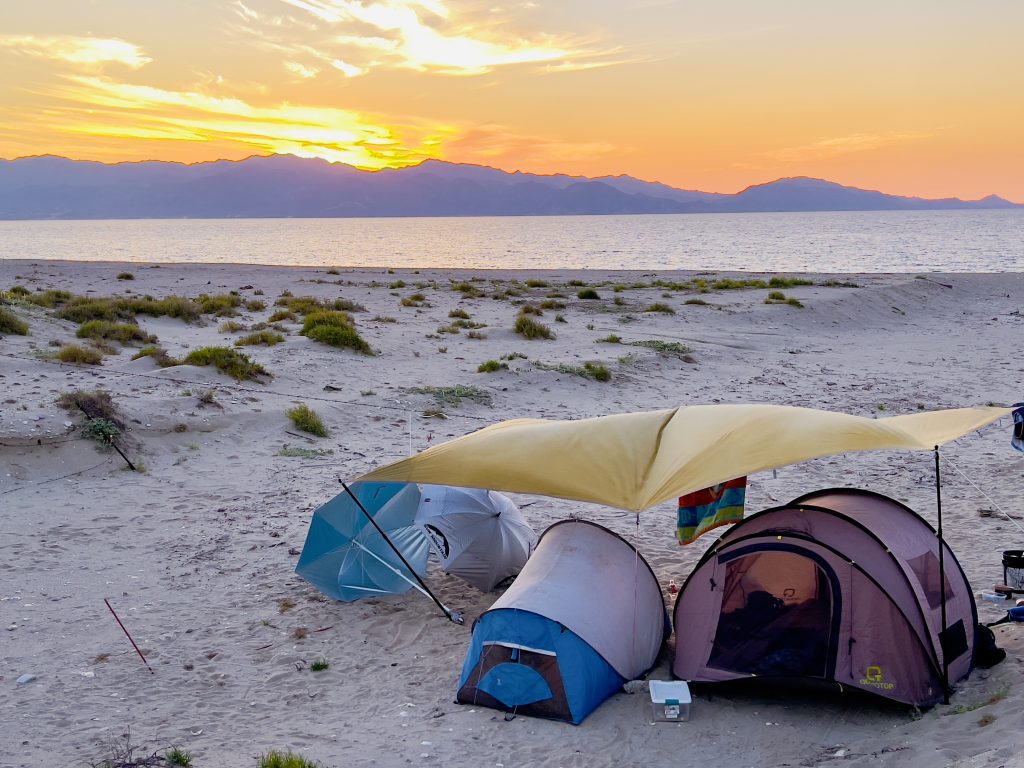
About one week ago, my dad and I headed out to Isla Cerralvo for our first campout on the island. Little did we know, we would have a crazy, reptile-filled, extremely hot and all-around amazing trip. This is the story of our history-making yet somewhat torturous trip.
It was early morning on October 19, and I had slept poorly due to my intense excitement. I woke up around 6 o’clock, we finished packing, and then I had to suffer through my math Zoom before we could depart. After a half-hour boat ride, we arrived at the dune complex on the southwestern tip of Isla Cerralvo. We unloaded our stuff (about a half boatload) and started scouting for a good campsite. As I was “scouting” the dunes, I noticed a few snake tracks, and then I was trying to catch lizards and, before I knew it, a long time had passed.
When I returned to our landing spot, my dad showed me his desired campsite. It was on the beach at the base of an arroyo with steepish edges, and an old barbed wire fence was hanging about five-and-a-half feet off the ground, exactly one inch above my eye level. My dad said the fence was perfect for hanging up shade tarps, and I absentmindedly agreed with him, being anxious to get back into the field. Ultimately, that decision would be my downfall.
Isla Cerralvo is home to five endemic reptile species. The Isla Cerralvo Sator (Sceloporus grandaevus) and the Isla Cerralvo Whiptail (Sceloporus grandaevus) are the lizards, but the snakes are what brought us to the island. The Isla Cerralvo Rattlesnake (Crotalus enyo cerralvensis) and the Savages Sand Snake (Chilomeniscus savagei) were both secondary targets but, what we really wanted to find, was the extremely rare Isla Cerralvo Long-Nosed Snake (Rhinocheilus etheridgei).
Stay tuned for the next installment of this story!